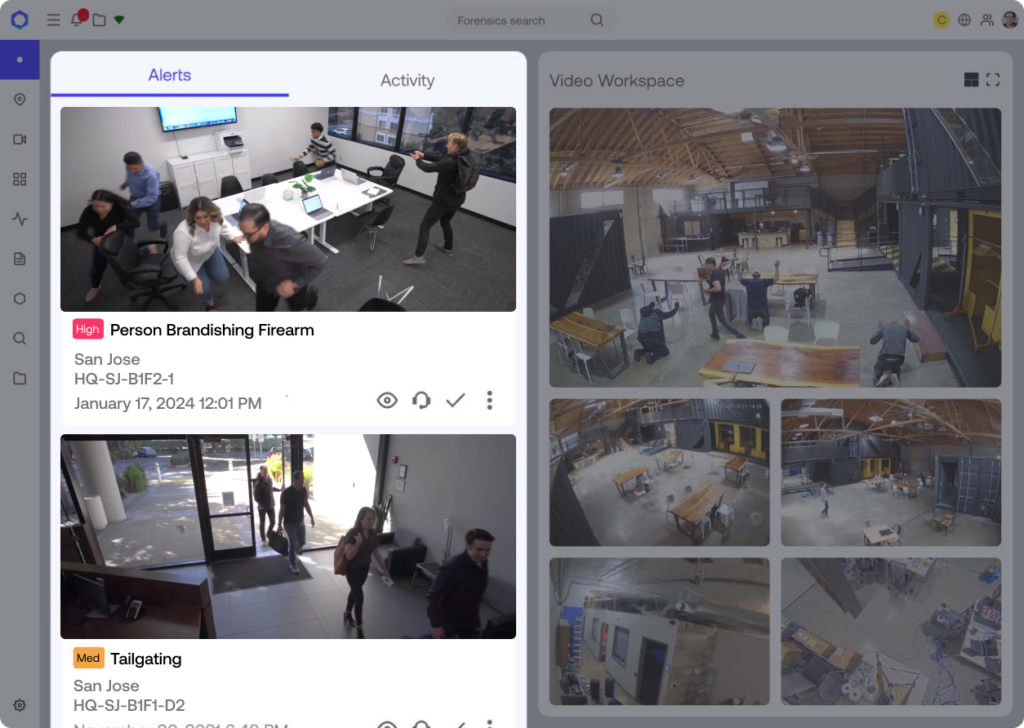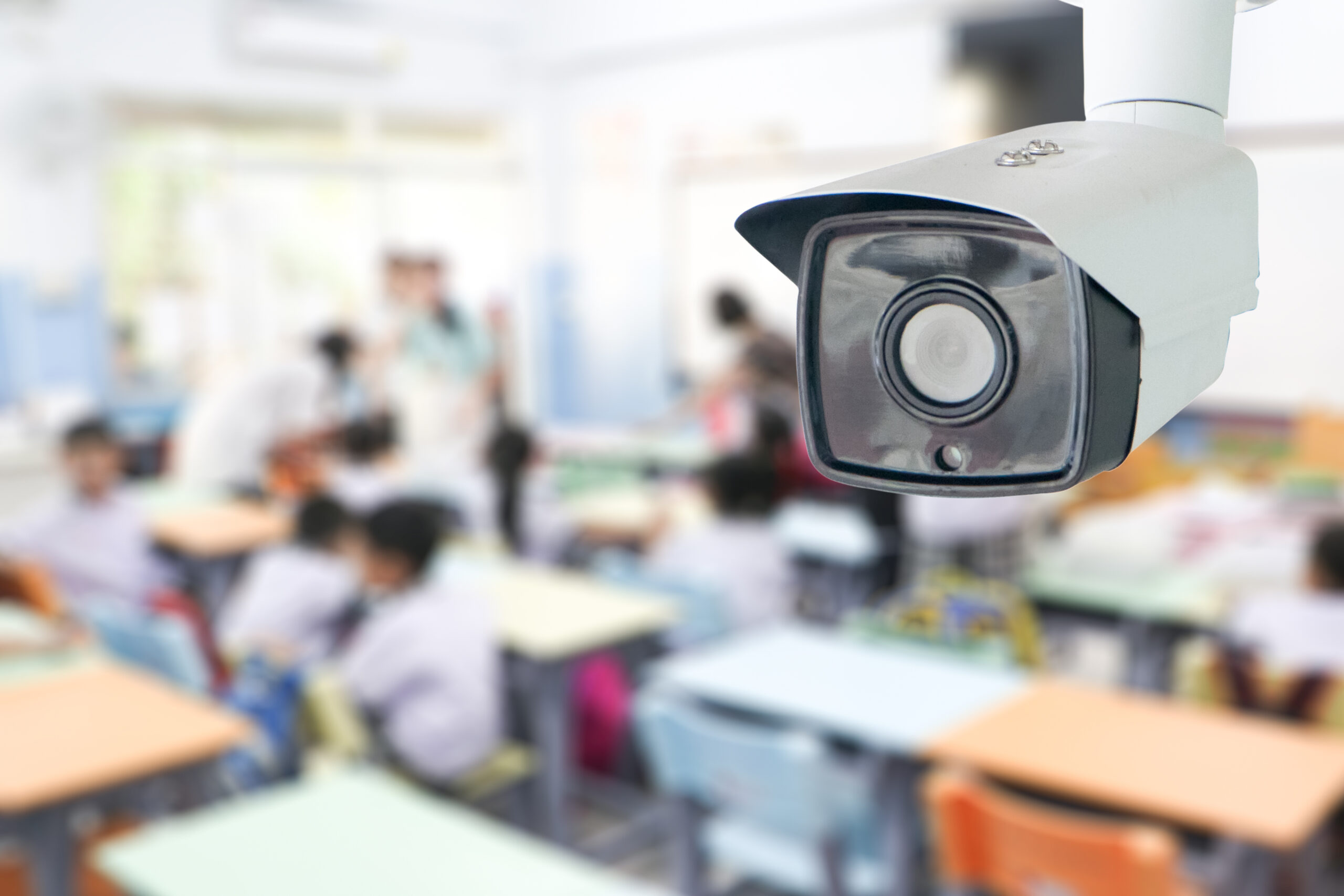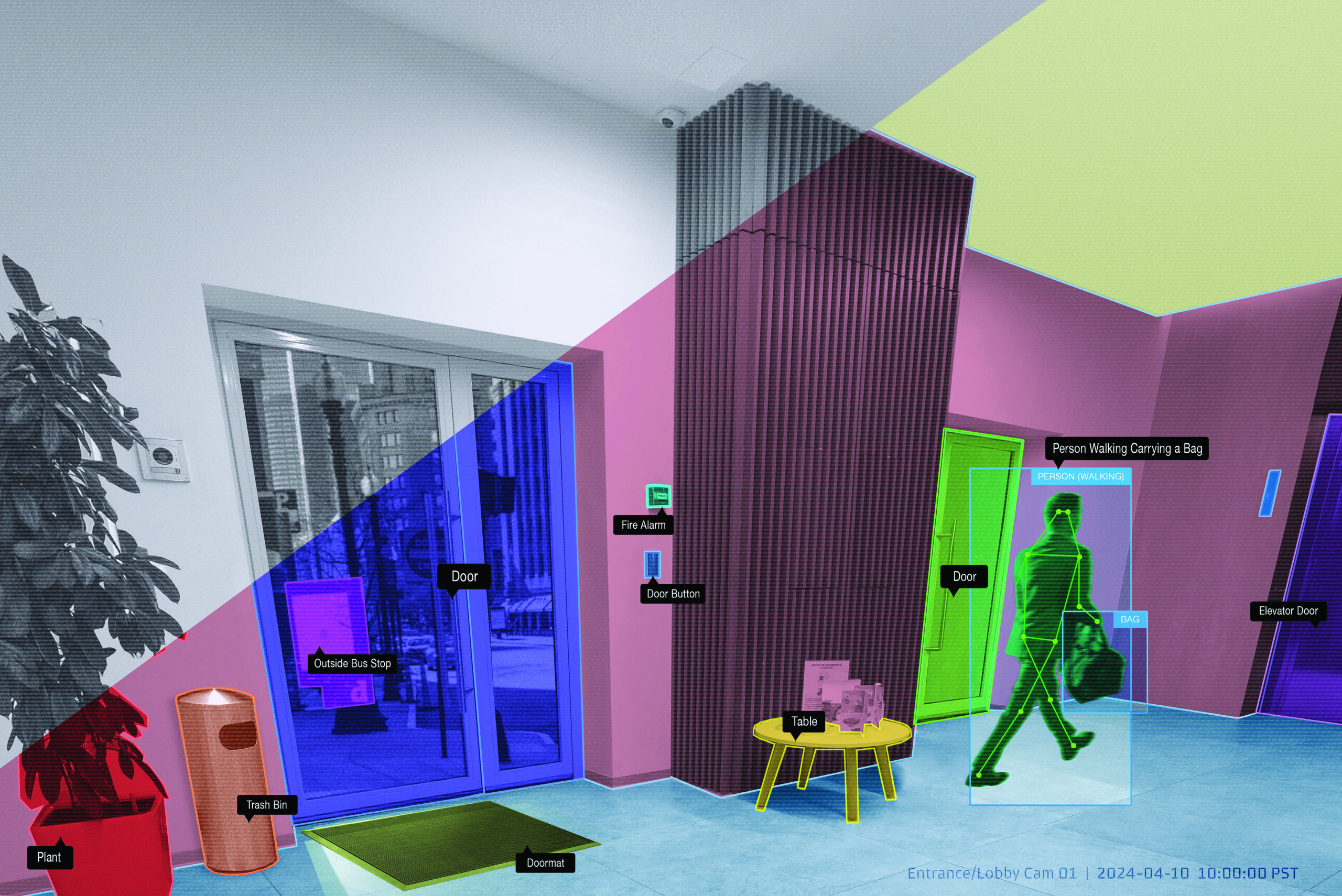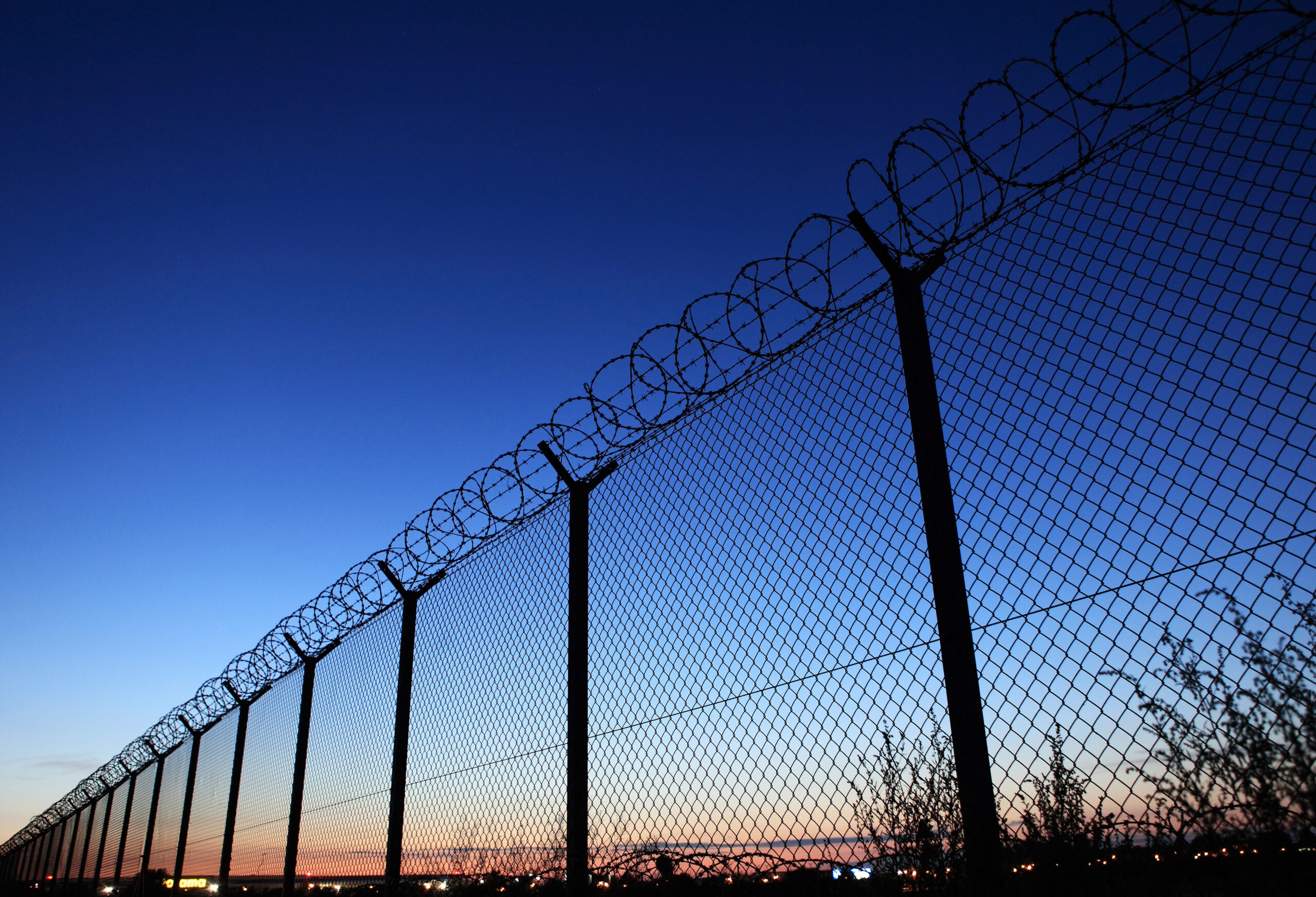In the 2023-2024 school year, 158 false reports of an active shooter (swatting) were made against schools.
Swatting jeopardizes the safety of school communities and presents a major challenge for school leaders and security teams tasked with protecting students, faculty, and staff.
From this article, you’ll gain a comprehensive understanding of school swatting: common indicators of fake threats, how schools can minimize the impacts of hoax calls, and where AI-powered security can mitigate these malicious acts.
Table of Contents
- What is school swatting?
- The data on hoax calls
- Why have false threats increased?
- Indicators of swatting
- How to prevent, respond to, and mitigate swatting
- How AI security minimizes the impact of swatting
What is school swatting?
School swatting involves falsely reporting an urgent incident occurring on school grounds, such as an active shooter, bomb threat, or hostage situation. A swatting call is intended to trick police into issuing a large-scale response, often involving a SWAT team.
While these events are ultimately determined to be false, they nevertheless trigger an immediate and traumatizing response from the school community and law enforcement, reacting as if they are in the middle of a life-or-death emergency.
Swatting calls are often engineered to exploit fears of school shootings. These calls commonly come in waves. On numerous occasions, multiple schools in a state were targeted on the same day; during the 2022-2023 school year, more than 20 Minnesota schools were targeted in two separate incidents, one in September 2022 and one in February 2023.
Many hoax calls are computer-generated and orchestrated by anonymous individuals outside of the school community and even outside of the country. Caller ID spoofing may be used to disguise the swatter’s phone number. Unfortunately, accountability is challenging and perpetrators are often not caught.
The data on hoax calls
Media reports on swatting incidents tend to group incidents by region instead of by school district. As a result, although hundreds of schools in the United States have received swatting calls, the actual number of affected schools may be much larger than what the current data shows.
- In the 2022-2023 school year, 446 false reports were made against schools — a 546% increase from 2018-2019.
- Throughout the 2022-2023 school year, 63.8% of all violent incidents were false reports of school shootings — while 7.9% of all violent events were actual shootings.
- In March 2023, more than 30 schools across Iowa, Massachusetts, and New York were targeted in a single day.
Why have false threats increased?
In recent years, the annual number of active shootings in the United States has been on a steady upward incline. School shooting hoax calls weaponize the increasing fears of shootings.
Perpetrators of school swatting may feel motivated by the desire to instill fear and chaos and gain media attention and notoriety, all without being held accountable for their actions.
Indicators of swatting
The New Jersey Cybersecurity and Communications Integration Cell compiled several indicators of swatting calls. Use these characteristics to identify a potential swatting incident:
- The call is the only incoming call received to report an active shooter or other emergency. If a crisis is occurring, multiple calls to dispatch from witnesses or victims are likely.
- The incoming phone number is spoofed or blocked. Swatting calls that use Voice over Internet Protocol (VoIP) services will appear as all zeros or nines, blocked, unavailable, or one of the default Skype numbers: (661) 748-0240, (661) 748-0241, or (661) 748-0242.
- The call is routed through a non-emergency dispatch line. Swatters using VoIP services cannot directly dial 911. Instead, they look up non-emergency lines.
- The caller’s tone and background noise don’t match the alleged emergency. They are reporting an alleged school shooting, yet they appear calm and collected and have minimal background noise.
- The caller is typing or clicking a computer mouse in the background. Swatters may search the internet or use online mapping while on the phone to answer follow-up questions and give descriptions of buildings.
- The caller can’t answer follow-up questions about their full name, phone number, or current location. Swatters may try to provide descriptions of buildings garnered from photos on social media or internet searches.
- The caller incorrectly pronounces city, street, or building names. Swatting calls are often conducted by perpetrators outside of the United States who are unfamiliar with the areas they are targeting.
- The caller’s story changes or ramps up throughout the questioning. When met with follow-up questions or doubts that their claims are genuine, the swatter may escalate or change details in their story.
- The caller uses specific gun names or terminology to identify weapons. Swatters commonly refer to weapons often found in video games, such as an AR-15.
- Gunshots or explosions in the background appear to be fake. They may play recordings of gunshots while on the call.
- The caller says they are armed or suicidal. They may claim they are willing to shoot law enforcement.
How to prevent, respond to, and mitigate swatting
Swatting traumatizes students and staff, diverts resources away from legitimate threats, disrupts instructional time, and undermines feelings of safety and security within schools. It’s critical to have the proper security measures and school security technology in place to mitigate these events.
The following are key measures that school leaders and security practitioners can take when preventing and responding to swatting.
- De-escalate swatting with AI technology: Ambient.ai’s AI-powered school security detects all emerging activity within and around your school to mitigate swatting calls and avoid unnecessary panic. Jump to this section to learn more.
- Take a proactive, layered approach to security: The Harker School protects the K-12 community across its four campuses with layered security, from the security officers patrolling the perimeter to the AI watching the cameras for threats. This approach enables you to comprehensively monitor your school and easily distinguish between real and false emergencies.
- Collaborate with local law enforcement: Establish designated contacts within your school administration and the local police department who are tasked with sharing information amid swatting events. Coordinate drills with law enforcement to test out your emergency response to a swatting incident. Have police officers train faculty and staff on warning signs of swatting. If swatting unfolds, share all pertinent information with law enforcement to aid in their investigations.
- Educate students and staff: Hold regular training sessions alongside law enforcement to teach students and staff about swatting. Discuss how to report suspicious behavior, appropriate responses to swatting, and which actions to avoid. Familiarize students and staff with their roles during an emergency. Ensure all students and staff participate in emergency preparedness drills.

How AI security minimizes the impact of swatting
Without complete situational awareness of your school grounds, the immediate reaction to fake calls is to respond with full force and initiate lockdowns.
Ambient.ai transforms your school’s security posture to better protect against both false and legitimate incidents.

- The Ambient.ai platform layers AI into your existing security cameras to monitor and alert you of suspicious activity and threats in real-time. Ambient.ai’s always-on AI brain watches the cameras 24/7, providing you with the essential situational awareness that you need to de-escalate hoax calls.
- If a legitimate incident arises, Ambient.ai instantly alerts your team for 10x faster responses to hundreds of threats, including gun and weapons detection, fence jumping, doors propped open, people falling, people or vehicles loitering, and much more.
- Instant alert notifications capture critical context, including corresponding video surveillance footage. You can then easily share this information via text message with school resource officers and law enforcement so there is never a communication breakdown.
Learn more about how Ambient.ai’s AI-powered school security can protect your students, faculty, and staff.













